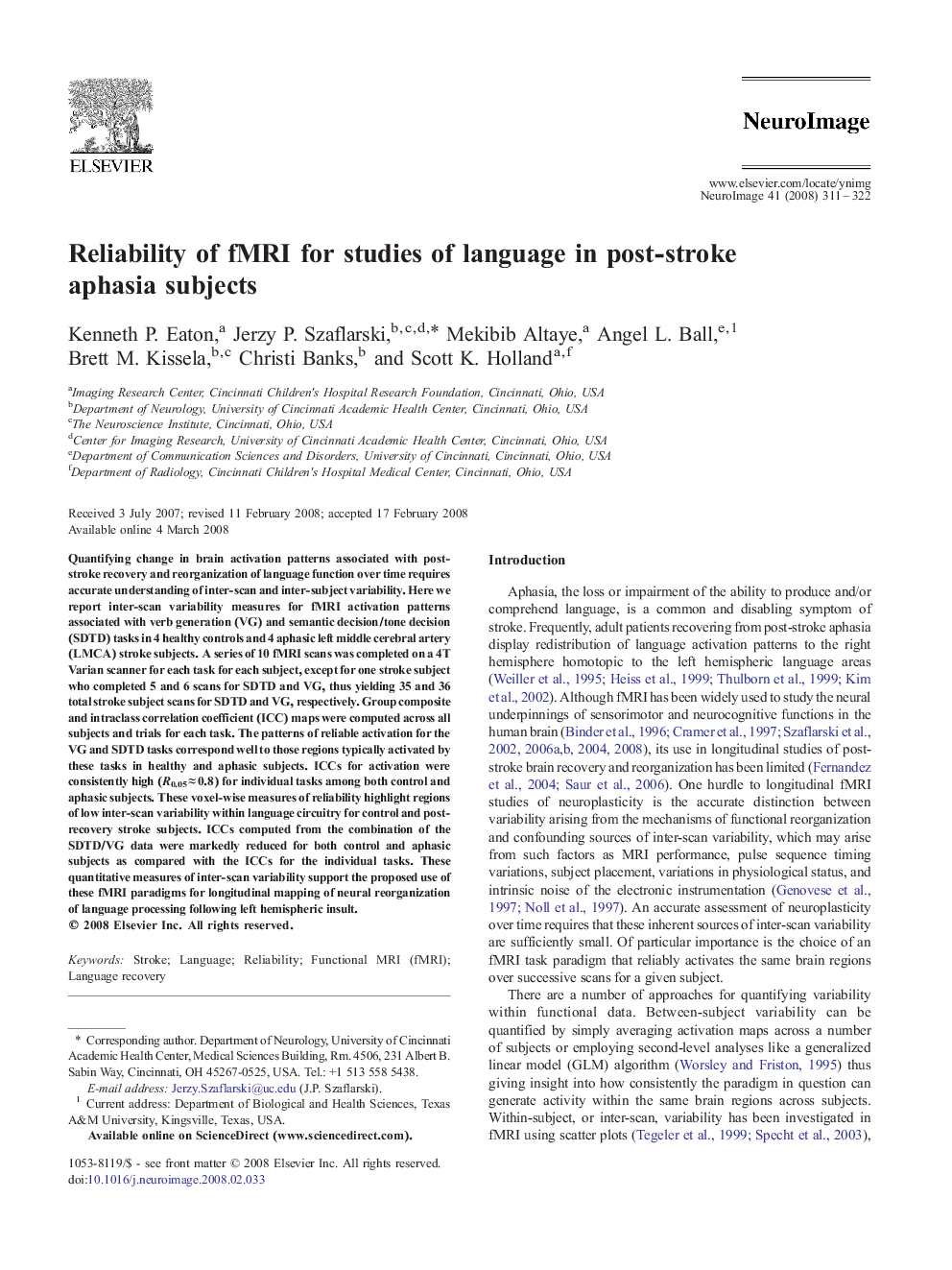| Article ID | Journal | Published Year | Pages | File Type |
|---|---|---|---|---|
| 6039044 | NeuroImage | 2008 | 12 Pages |
Abstract
Quantifying change in brain activation patterns associated with post-stroke recovery and reorganization of language function over time requires accurate understanding of inter-scan and inter-subject variability. Here we report inter-scan variability measures for fMRI activation patterns associated with verb generation (VG) and semantic decision/tone decision (SDTD) tasks in 4 healthy controls and 4 aphasic left middle cerebral artery (LMCA) stroke subjects. A series of 10 fMRI scans was completed on a 4T Varian scanner for each task for each subject, except for one stroke subject who completed 5 and 6 scans for SDTD and VG, thus yielding 35 and 36 total stroke subject scans for SDTD and VG, respectively. Group composite and intraclass correlation coefficient (ICC) maps were computed across all subjects and trials for each task. The patterns of reliable activation for the VG and SDTD tasks correspond well to those regions typically activated by these tasks in healthy and aphasic subjects. ICCs for activation were consistently high (R0.05 â 0.8) for individual tasks among both control and aphasic subjects. These voxel-wise measures of reliability highlight regions of low inter-scan variability within language circuitry for control and post-recovery stroke subjects. ICCs computed from the combination of the SDTD/VG data were markedly reduced for both control and aphasic subjects as compared with the ICCs for the individual tasks. These quantitative measures of inter-scan variability support the proposed use of these fMRI paradigms for longitudinal mapping of neural reorganization of language processing following left hemispheric insult.
Related Topics
Life Sciences
Neuroscience
Cognitive Neuroscience
Authors
Kenneth P. Eaton, Jerzy P. Szaflarski, Mekibib Altaye, Angel L. Ball, Brett M. Kissela, Christi Banks, Scott K. Holland,
